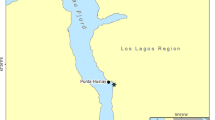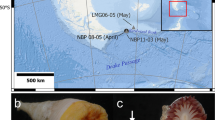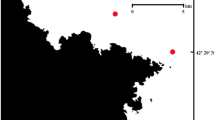Abstract
Fungiacyathus marenzelleri (Vaughan, 1906) is a deep-water solitary coral, cosmopolitan in distribution that is found at depths of 300–6,328 m. This study examined gametogenesis, inter-annual variability and reproductive periodicity of F. marenzelleri collected from Station M (34°50′N, 123°00′W) in the northeast Pacific at a depth of 4,100 m. Samples were collected (May, June, October 1996; August 1998; February, June 2001; and June 2002) and histologically processed with spermatogenic stage, oocyte size and fecundity measured. Four stages of spermatogenesis were identified and all males contained multiple stages of sperm development in each seasonal sample. Three stages of oocyte development were identified; previtellogenic (<28–150 μm), vitellogenic (150–300 μm) and late vitellogenic (300–400 μm). Comparison of mean oocyte diameters among sampling dates showed there were no inter-annual variations or seasonal differences. Overall, fecundity was 1,290 (±407) oocytes polyp−1, and with no significant differences between sample months. Fecundity was not polyp-size dependent. This study shows a similar quasi-continuous mode of reproduction to this species examined from the Northeast Atlantic Ocean, but the fecundity is reduced by 50%. The reproductive output may fluctuate in relation to the input of organic material at this site, as shown by non-significant trends in the oocyte size-frequency and fecundity data. A quasi-continuous output of gametes would promote successful fertilisation and wide dispersal of the lecithotrophic larvae.






Similar content being viewed by others
References
Adkins J, Henderson GM, Wang SL, O’Shea S, Mokadem F (2004) Growth rates of the deep-sea scleractinian Desmophyllum cristagalli and Enallopsammia rostrata. Earth Planet Sci Lett 227:481–490
Baldwin RJ, Glatts RC, Smith KL (1998) Particulate matter fluxes into the benthic boundary layer at a long time-series station in the abyssal NE Pacific: Composition and fluxes. Deep-Sea Res II 45:643–666
Beaulieu S, Baldwin RJ (1998) Temporal variability in currents and the benthic boundary layer at an abyssal station off central California. Deep-Sea Res II 45:587–615
Billett DSM, Lampitt RS, Rice AL, Mantoura RFC (1983) Seasonal sedimentation of phytoplankton to the deep-sea benthos. Nature 302:520–522
Brooke SD, Young CM (2003) Reproductive ecology of a deep-water scleractinian coral, Oculina varicosa, from the southeast Florida shelf. Cont Shelf Res 23:847–858
Burgess S, Babcock RC (2005) Reproductive Ecology of three reef-forming, deep-sea corals in the New Zealand region. In: Freiwald A, Roberts JM (eds) Cold-water corals and ecosystems. Springer, New York, pp 701–713
Cairns SD (1982) Antarctic and Subantarctic Scleractinia. Biology of the Antarctic Seas XI: Antarct Res Ser 34:1–74
Cairns SD (2001) A brief history of taxonomic research on azooxanthellate Scleractinia. Bull Biol Soc Wash 10:191–203
Gage JD, Tyler PA (1991) Deep-sea biology: a natural history of organisms at the deep-sea floor. Cambridge University Press, Cambridge
Herring P (2002) The biology of the deep ocean. Oxford University Press, London
Lauerman LML, Kaufmann RS (1998) Deep-sea epibenthic echinoderms and a temporally varying food supply: results from a one year time series in the N.E. Pacific. Deep-Sea Res II 45:817–842
Lauerman LML, Kaufmann RS, Smith K (1996) Disribution and abundance of epibenthic megafauna at a long term time-series station in the abyssal northeast Pacific. Deep-Sea Res 43:1075–1103
Reed JK (1980) Distribution and structure of deep-water Oculina varicosa coral reefs off central eastern Florida. Bull Mar Sci 30:667–677
Rice AL, Tyler PA, Paterson GJL (1992) The pennatulid Kophobelemnon stelliferum (Cnidaria: Octocorallia) in the Porcupine Seabight (North-east Atlantic Ocean). J Mar Biol Assoc UK 72:417–434
Richmond RH, Hunter CL (1990) Reproduction and recruitment of corals: comparisons among the Caribbean the Tropical Pacific and the Red Sea. Mar Ecol-Prog Ser 60:185–203
Rogers AD (1999) The biology of Lophelia pertusa (Linnaeus 1758) and other deep-water reef-forming corals and impacts from human activities. Int Rev Hydrobiol 84:315–406
Ruhl HA, Smith KL (2004) Shifts in deep-sea community structure linked to climate and food supply. Science 305:513–515
Smith KL, Baldwin RJ (1984) Seasonal fluctuations in deep-sea sediment community oxygen consumption: central and eastern North Pacific. Nature 307:624–625
Smith KL, Druffel ERM (1998) Long time-series studies of the benthic boundary layer at an abyssal station in the NE Pacific. Deep-Sea Res II 45:573–586
Smith KL, Kaufmann RS (1999) Long term discrepancy between food supply and demand in the deep eastern North Pacific. Science 284:1174–1177
Smith KL, Baldwin RJ, Carlucci AF (2001) Pelagic-benthic coupling in the abyssal eastern North Pacific: an eight year time-series study of food supply and demand. Limnol Oceanogr 46:543–556
Smith KL, Baldwin RJ, Ruhl HA, Kahru M, Mitchell BG, Kaufmann RS (2006) Climate effect on food supply to depths greater than 4,000 meters in the northeast Pacific. Limnol Oceanogr 51:166–176
Tyler PA, Bronsdon SK, Young CM, Rice AL (1995) Ecology and gametogenic biology of the Genus Umbellula (Pennatulacea) in the North Atlantic Ocean. Int Rev Hydrobiol 80:187–199
Tyler PA, Gage JD, Paterson GJL,Rice AL (1993) Dietary constraints on reproductive periodicity in two sympatric deep-sea astropectinid seastars. Mar Biol 115:267–277
Van Praët M, Rice AL, Thurston MH (1990) Reproduction in two deep-sea anemones (Actiniaria); Phelliactis hertwigi and P. robusta. Prog Oceanogr 24:207–222
Waller RG, Tyler PA (2005) The reproductive ecology of two deep-water reef building scleractinians from the NE Atlantic Ocean. Coral Reefs 24:514–522
Waller RG, Tyler PA, Gage JD (2002) Reproductive ecology of the deep-sea scleractinian coral Fungiacyathus marenzelleri (Vaughan 1906) in the northeast Atlantic Ocean. Coral Reefs 21:325–331
Waller RG, Tyler PA, Gage JD (2005) Sexual reproduction of three deep water Caryophyllia (Anthozoa: Scleractinia) species from the NE Atlantic Ocean. Coral Reefs 24:594–602
Wilson JB (1979) The distribution of the coral Lophelia pertusa (L.) [L. Prolifera (Pallas)] in the North-East Atlantic. J Mar Biol Assoc UK 59:149–164
Zibrowius H (1980) Les Scléractiniaires de la Méditerranée et de l’Atlantique nord-oriental. Mem de l’institut Oceanogr Monaco 11:22–27
Acknowledgments
The authors would like to thank Daphne Fautin, Stephen Cairns, Roberta Baldwin and Ken Smith for facilitating and providing the use of these samples for this study. Samples were collected using NSF grants OCE8922620, OCE9217334, OCE9807103, OCE024272 awarded to K. Smith. Jon Copley also provided useful comments and suggestions that improved this manuscript. HCF was supported by a NERC graduate fellowship, and RGW by the European Union PhD Fellowship under the ACES programme.
Author information
Authors and Affiliations
Corresponding author
Additional information
Communicated by J.P. Grassle, New Brunswick.
Rights and permissions
About this article
Cite this article
Flint, H.C., Waller, R.G. & Tyler, P.A. Reproductive ecology of Fungiacyathus marenzelleri from 4100 m depth in the northeast Pacific Ocean. Mar Biol 151, 843–849 (2007). https://doi.org/10.1007/s00227-006-0539-2
Received:
Accepted:
Published:
Issue Date:
DOI: https://doi.org/10.1007/s00227-006-0539-2




